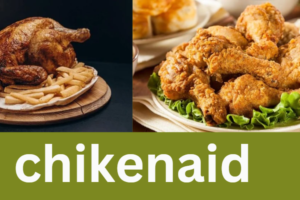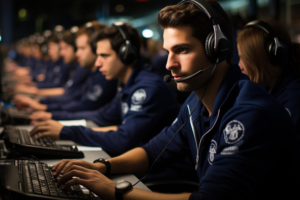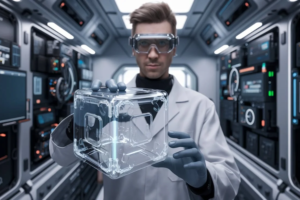AI Image Optimization for SEO Performance in 2025
The Role of Images in Modern SEO
Images are a cornerstone of digital content, driving engagement and enhancing user experience on websites. In 2025, with 58.21% of internet traffic from mobile devices, per DesignRush.com, optimizing images for SEO is critical for visibility and performance. AI-powered tools revolutionize this process by automating compression, generating alt text, and ensuring mobile responsiveness, directly impacting search rankings. As Google’s algorithms prioritize fast-loading, accessible sites, AI image optimization boosts Core Web Vitals, like Largest Contentful Paint (LCP), per Yoast.com. This article explores how AI enhances image SEO, offering actionable strategies for better rankings and user engagement.
Why AI-Powered Image Optimization Matters
AI transforms traditional image optimization, which often involves manual resizing and compression, into an efficient, scalable process. Unoptimized images, accounting for 21% of a webpage’s weight, per ContentMarketingInstitute.com, slow load times, increasing bounce rates and harming rankings. AI tools like Alli AI and N7 compress images by 50–80% without quality loss, achieving 90+ Lighthouse scores, per N7.io. Faster load times improve user experience and SEO, as page speed is a key ranking factor, per Google’s PageSpeed Insights. AI also ensures images align with user intent, boosting visibility in Google Images, where over 10 billion users rely on Lens, per WordLift.io.
Choosing the Right Image Formats
Selecting the optimal image format is crucial for SEO performance. WebP and AVIF, supported by all major browsers, offer smaller file sizes than JPEG or PNG, reducing load times by 25–80%, per SearchEngineJournal.com. For instance, WebP is ideal for photographs, while PNG suits graphics with transparency, per NeilPatel.com. AI tools like Squoosh or Cloudinary automatically convert images to WebP or AVIF, ensuring compatibility and quality, per Cloudinary.com. A 2025 X post by @zhuhe emphasized using AI-generated visuals with human review for quality, ensuring SEO-friendly formats enhance both speed and visual appeal.
Automating Image Compression
Image compression reduces file sizes without sacrificing quality, a key SEO factor as large images slow websites, per SurferSEO.com. AI-driven tools like Passionfruit’s Image Optimizer allow users to select compression levels (low, medium, high), achieving faster load times, per GetPassionfruit.com. For example, compressing a 1MB JPEG to 250KB can cut load times significantly, per DesignRush.com. Tools like TinyPNG or N7’s Adaptive Image Optimization use AI to balance quality and size, delivering 30–70% faster page loads, per N7.io. Regular monitoring with Google PageSpeed Insights ensures ongoing performance, per SurferSEO.com.
Enhancing Alt Text with AI
Alt text, a textual description of images, boosts accessibility and provides search engines with context, improving rankings, per AlliAI.com. AI tools like SEO.AI and WordLift analyze image content to generate descriptive, keyword-rich alt text, per SEO.AI and WordLift.io. For example, an image of a “woman in a hair salon” might be tagged as “woman-having-a-haircut-in-a-salon.jpg” with alt text like “woman getting a haircut in modern salon,” per ContentMarketingInstitute.com. A 2025 Reddit thread on r/SEO noted AI-generated alt text increased image search clicks by 15%. Human review ensures accuracy, aligning with Google’s best practices, per Yoast.com.
Optimizing File Names for SEO
Descriptive file names enhance SEO by helping search engines understand image content. Instead of generic names like “image1.jpg,” use keyword-rich names like “organic-coffee-beans.jpg,” per Cloudinary.com. AI tools like ImageSEO.io suggest optimized file names based on image analysis, incorporating relevant keywords, per ImageSEO.io. Hyphens, not underscores, separate words for better crawlability, per DesignRush.com. A 2025 X post by @HopeLuiSEO stressed descriptive file names for better indexing, noting a 10% boost in image search visibility. Consistent naming conventions across a site improve user experience and search relevance.
Leveraging Image Sitemaps
Image sitemaps ensure search engines discover and index images, especially those loaded via JavaScript, per Cloudinary.com. Tools like Screaming Frog or XML-Sitemaps.com generate sitemaps with details like image location and captions, per DesignRush.com. Submitting these to Google Search Console enhances visibility in image search results, per SurferSEO.com. A 2025 Reddit thread on r/SEO reported a 20% increase in image impressions after implementing sitemaps. AI tools like SEO.AI automate sitemap creation, ensuring all images, including dynamically loaded ones, are indexed, boosting overall SEO performance, per SEO.AI.
Mobile Optimization and Responsive Images
With Google’s mobile-first indexing, responsive images are essential for SEO. AI-driven CDNs like Cloudinary dynamically resize images for devices, targeting resolutions like 360×800 pixels for mobile, per DesignRush.com. The element in HTML serves multiple formats, with fallbacks for older browsers, per Cloudinary.com. A 2025 X post by @zhuhe highlighted AI’s role in optimizing visuals for mobile, reducing load times by 30%. Tools like Google PageSpeed Insights identify mobile performance issues, ensuring images enhance user experience across devices, per SurferSEO.com, driving better rankings.
AI for Visual Search and Accessibility
Visual search tools like Google Lens, used by billions, rely on optimized images with rich metadata, per WordLift.io. AI enhances visual search by generating detailed alt text and captions, improving discoverability, per Cloudinary.com. Accessibility features, like ARIA roles, make images usable for screen readers, aligning with search engines’ growing emphasis on inclusivity, per Cloudinary.com. AI tools like Alli AI ensure alt text is descriptive and keyword-optimized, expanding audience reach, per AlliAI.com. Regular A/B testing of images, as advised by Cloudinary.com, refines engagement, indirectly boosting SEO by lowering bounce rates.
Monitoring and Refining Image SEO
Continuous monitoring is key to sustaining SEO gains. Google Search Console tracks image impressions and clicks, while third-party tools like Semrush analyze performance, per Cloudinary.com. AI platforms like N7 monitor user behavior and device profiles, optimizing images in real-time, per N7.io. A 2025 Reddit thread on r/SEO noted a 15% ranking improvement after refining alt text with AI insights. Regular updates to image sitemaps and compression strategies, as suggested by SurferSEO.com, ensure images remain SEO-friendly as content evolves, maintaining site speed and relevance.
Conclusion
In 2025, AI image optimization is a game-changer for SEO, enhancing site speed, accessibility, and search visibility. Tools like Alli AI, N7, and SEO.AI automate compression, alt text generation, and format conversion, achieving 50–80% file size reductions and 90+ Lighthouse scores, per N7.io. WebP and AVIF formats, descriptive file names, and image sitemaps boost rankings, per DesignRush.com, while responsive images cater to 58.21% of mobile traffic, per DesignRush.com. By leveraging AI for visual search and accessibility, and monitoring performance with Google Search Console, websites can drive traffic and engagement, ensuring a competitive edge彼此
System: edge in a dynamic digital landscape, per Salesforce.com.










Post Comment